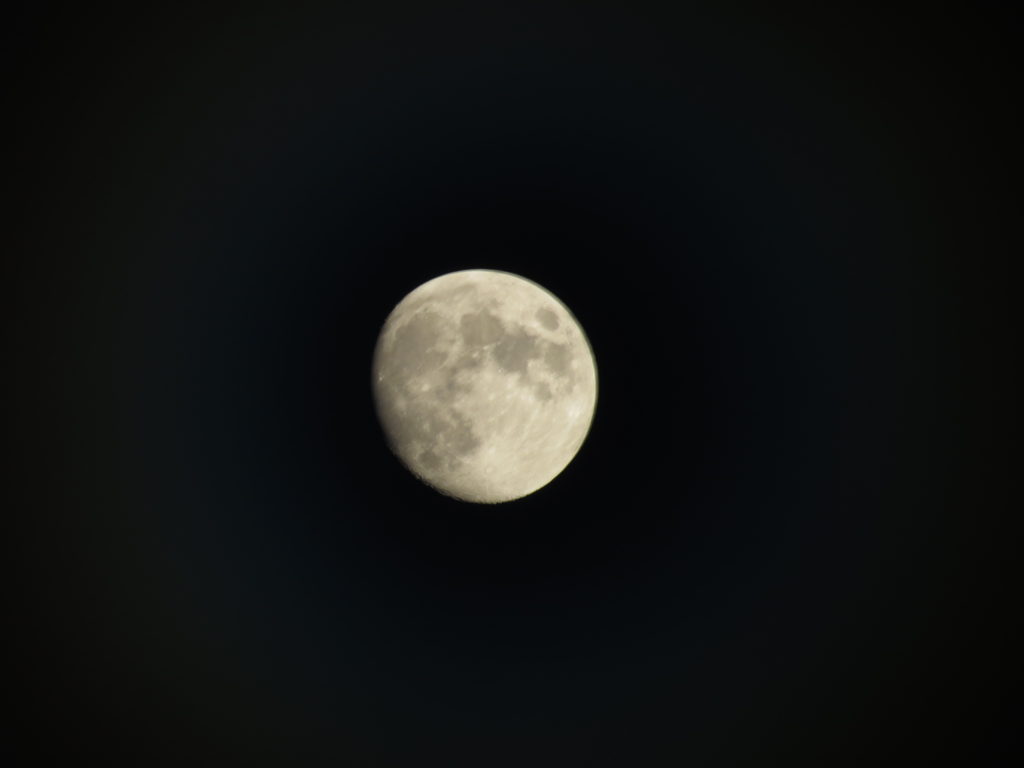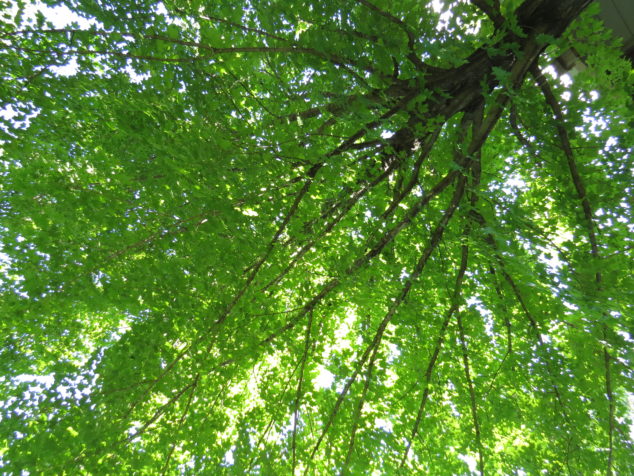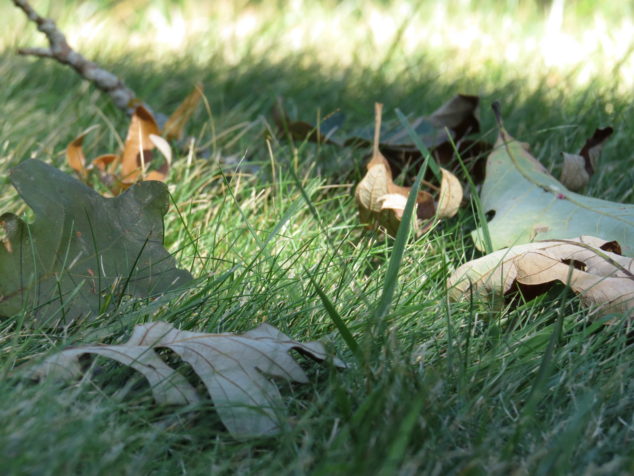Anyone who needs glasses knows that a lens or two can make all the difference in the world. With contact lenses, a person can ‘look’ like they have 20/20 vision, even as the tiny lenses float on the cornea in front of each eye’s intrinsic lens. Then there are camera and binocular lenses, microscope and telescope lenses, and lenses in a lighthouse, each performing a specific function in order for us to see more clearly. Anything with a curved surface that is transparent—even a drop of water—can be a lens that focuses light.
Thursday evening I took my camera from the cooled inside of our house to the warm, humid patio to snap a picture of the nearly-full moon. The muggy, warm air fogged the lenses of my glasses and of the camera. I swiped away the moisture with my shirttail. The moon is intriguing, even in its cyclic sameness—a lunar body close to Earth that reflects the light of the far-away Sun. Even without a change in the camera apparatus, the color of the moon can look different from photo to photo—from a greenish tinge…
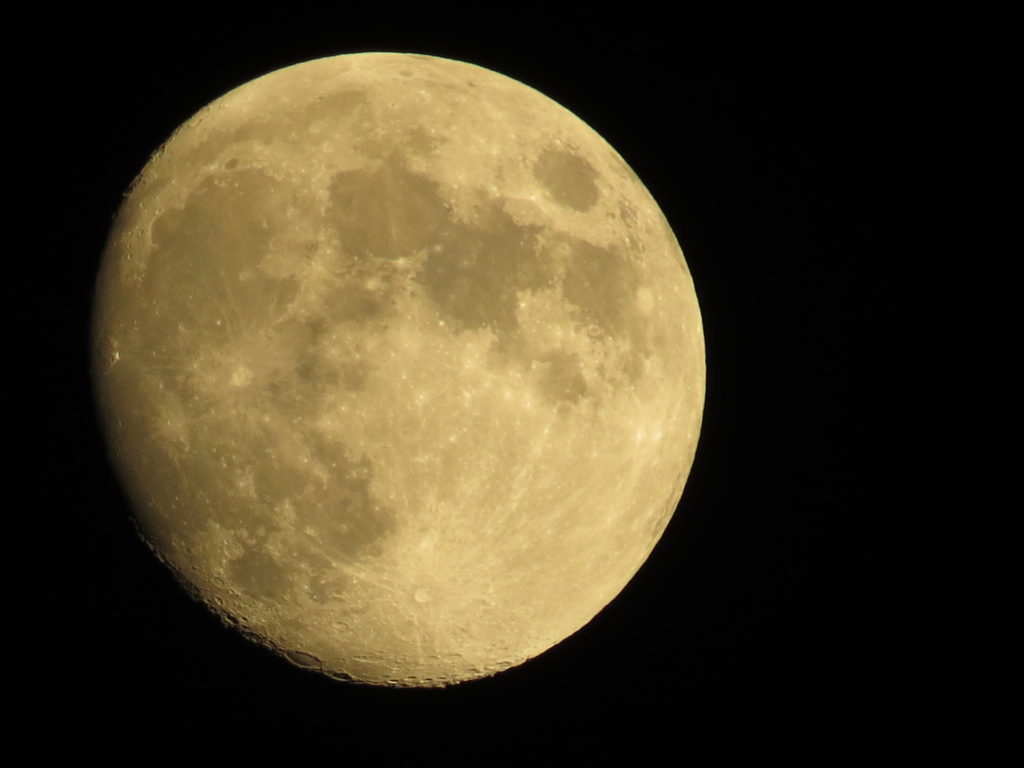
…to a rose tinge…
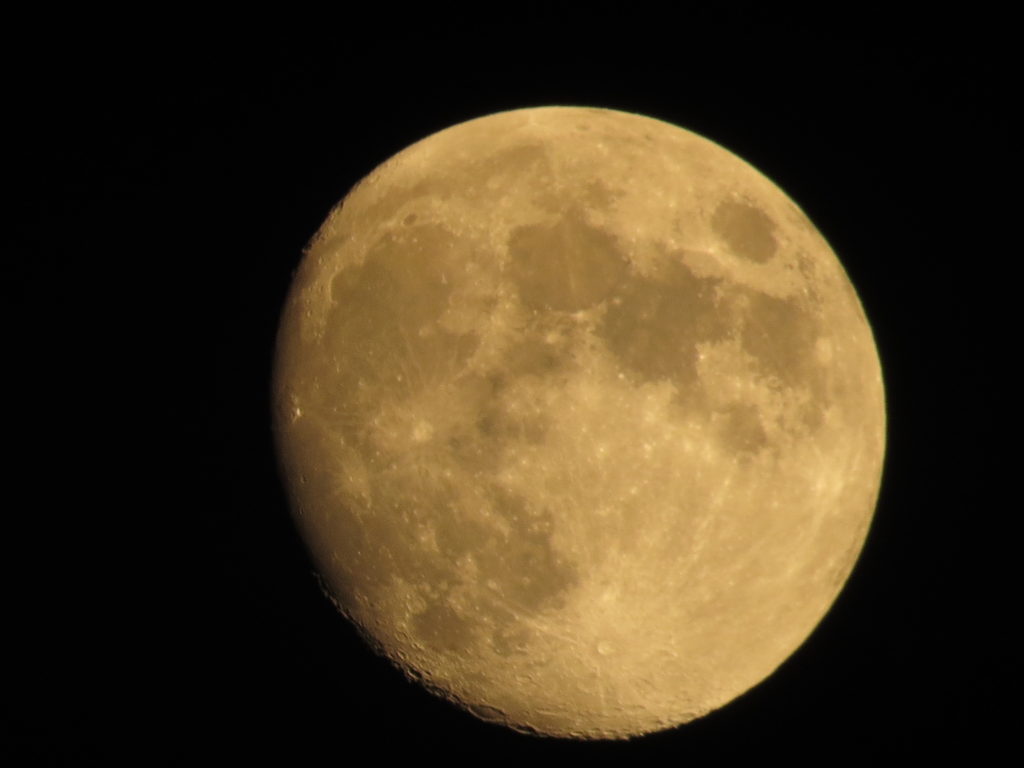
…to gray.
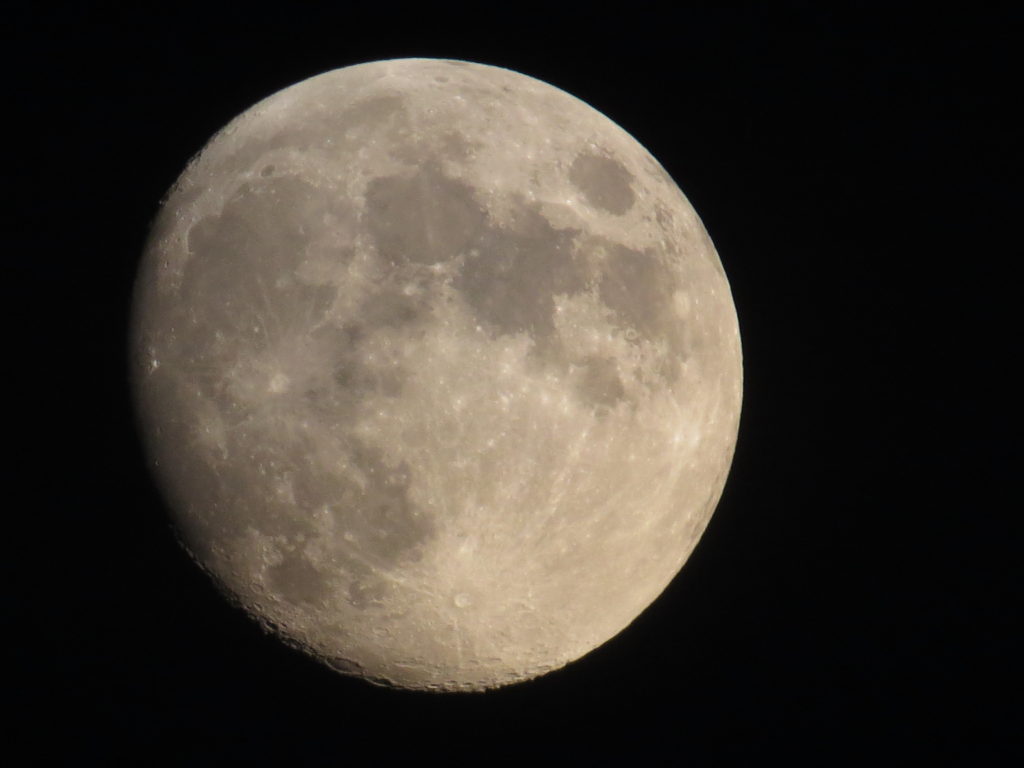
As I zoomed out for another shot, I noticed a faint circle of color around the moon. The colors changed and got brighter.
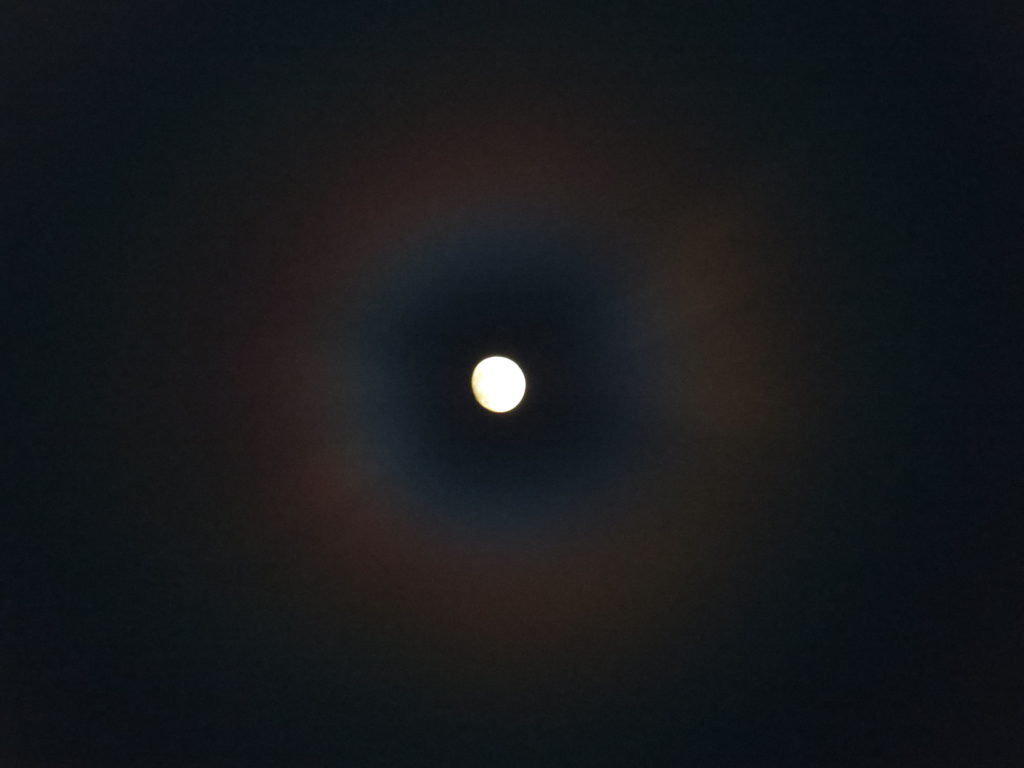
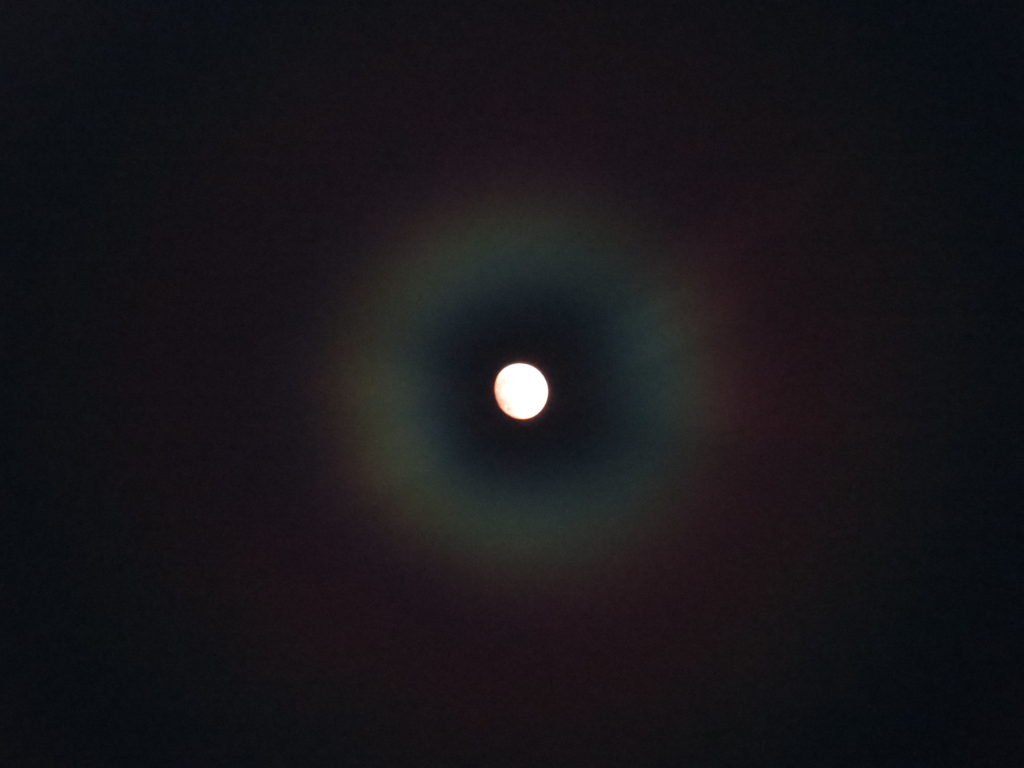
I realized that the rainbow colors around the moon were only seen through the camera lens—the humid air was condensing on the lens once again and fragmenting the moon light into its spectrum of colors!
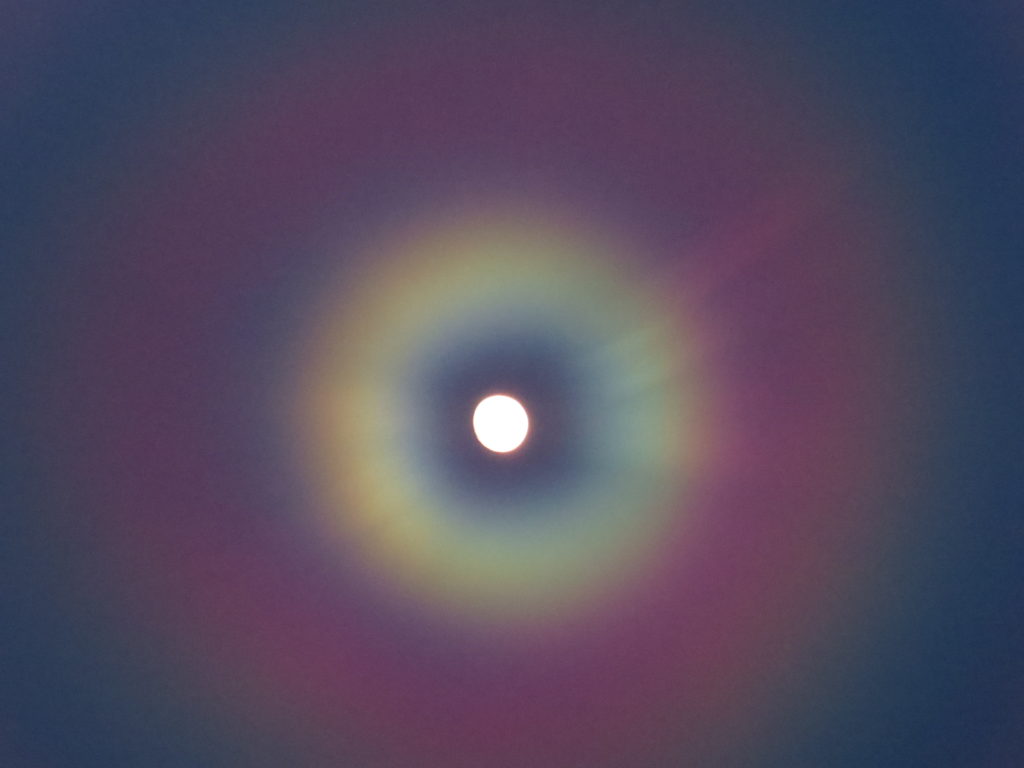
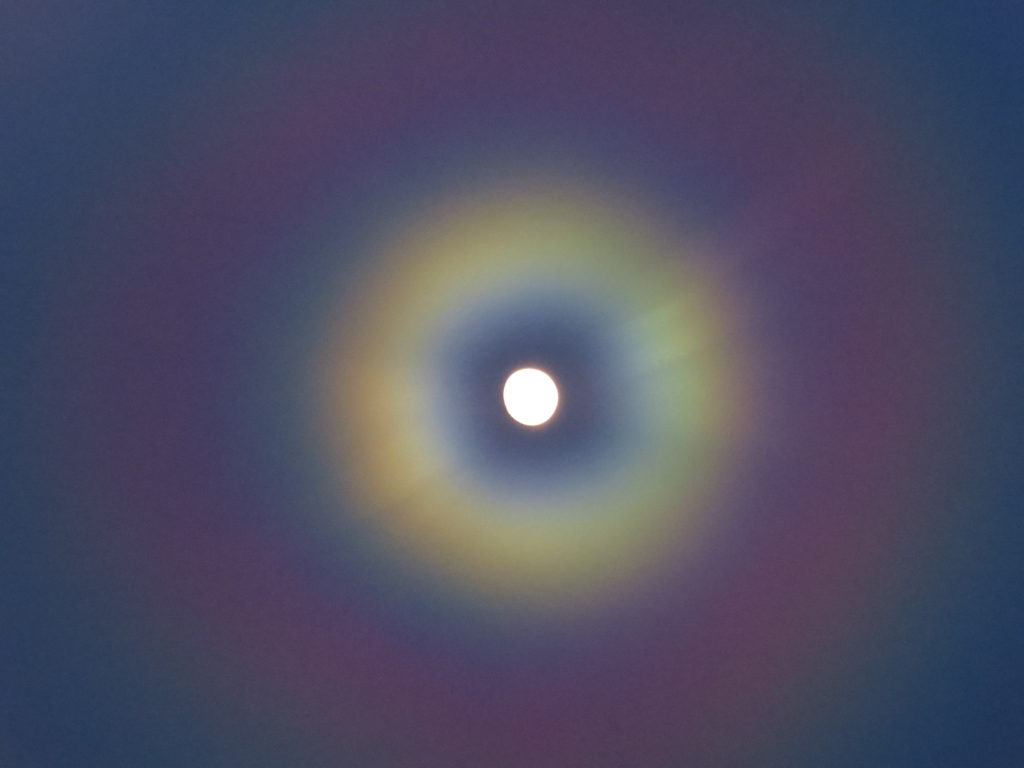

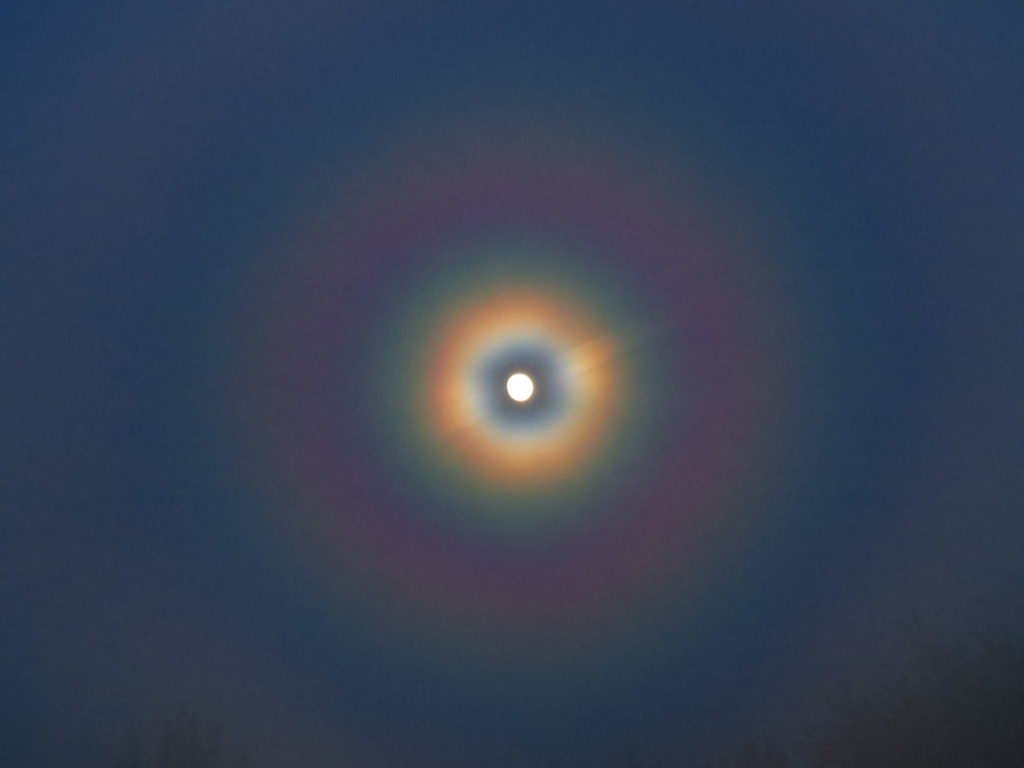
Talk about intriguing! I was mesmerized with the colorful rainbow light around the beautiful nearly-full moon.
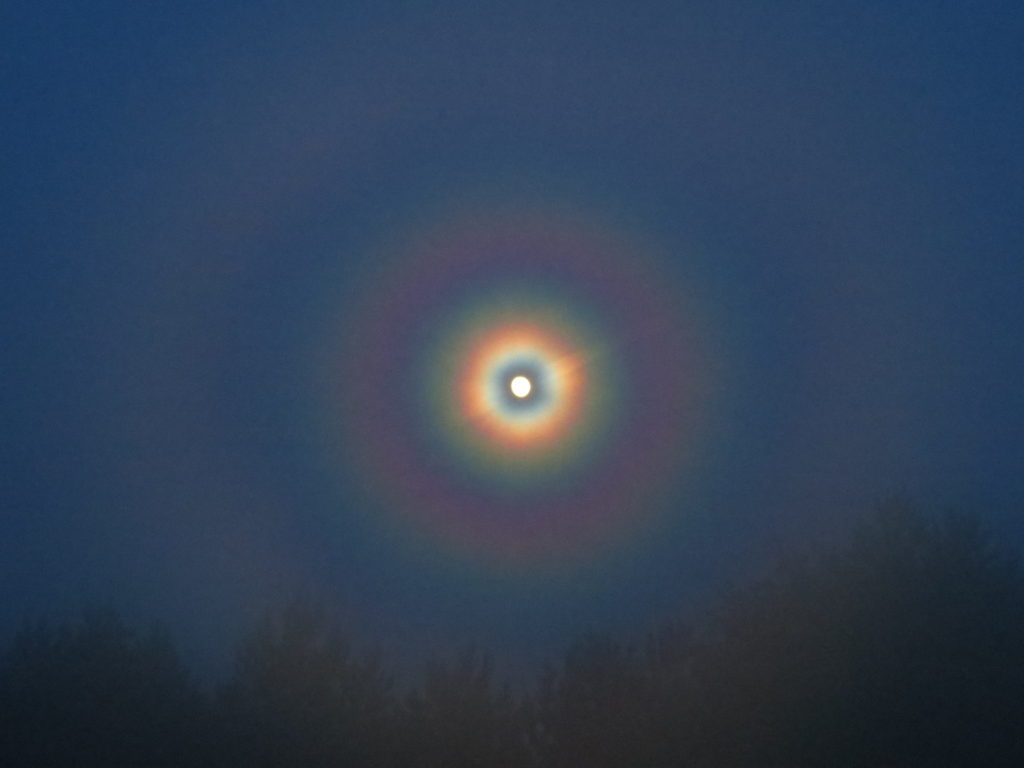
I was so distracted by the concentric circles of color that I ignored the mosquitoes landing on my skin.
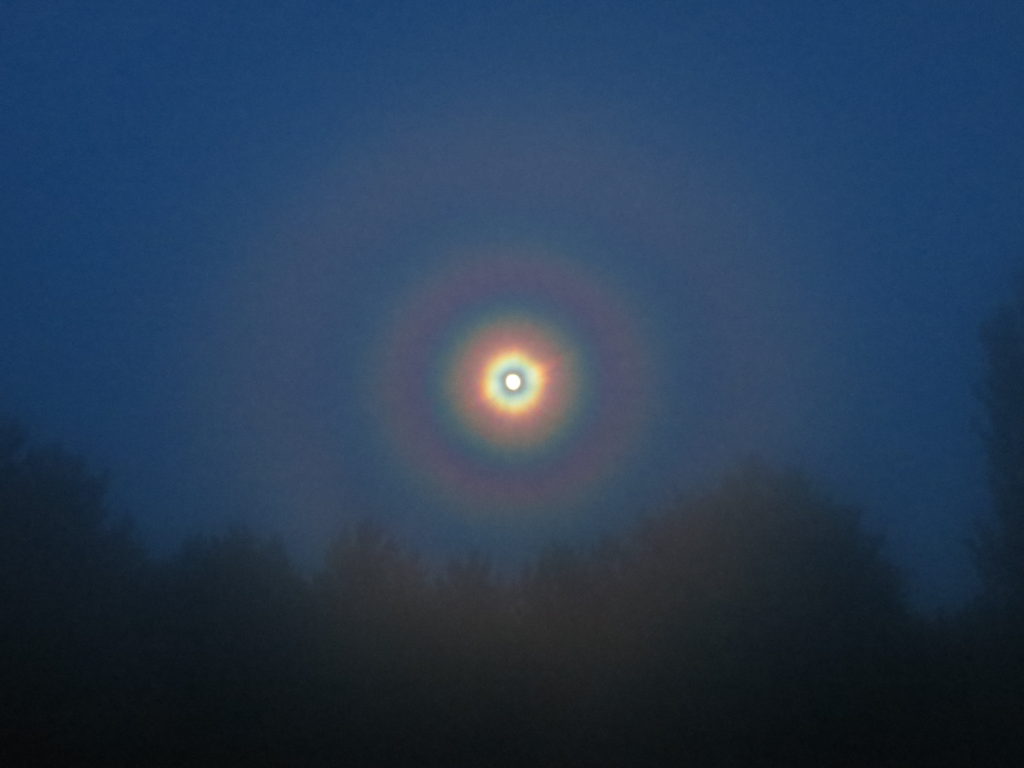
Even though I knew the phenomenon was the result of the hot, humid weather, I believed in the vision of my rainbow moon.
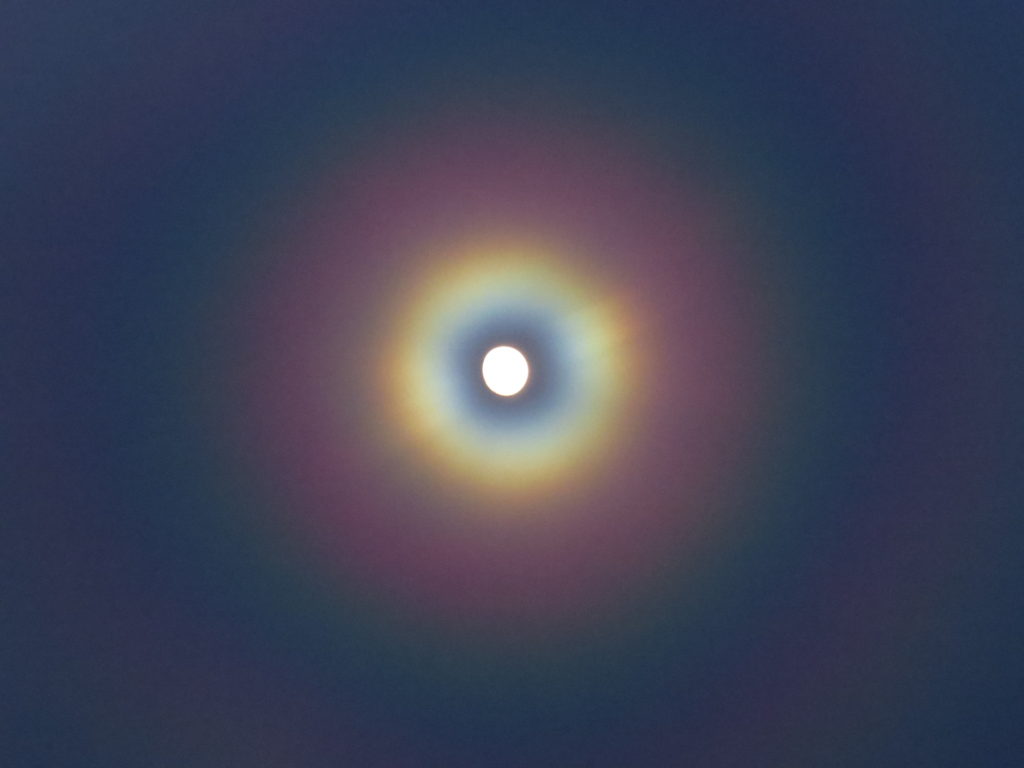
I mean, look at these photographs, look through the camera, how can you not believe?! (The only thing better would be a unicorn flying by.)
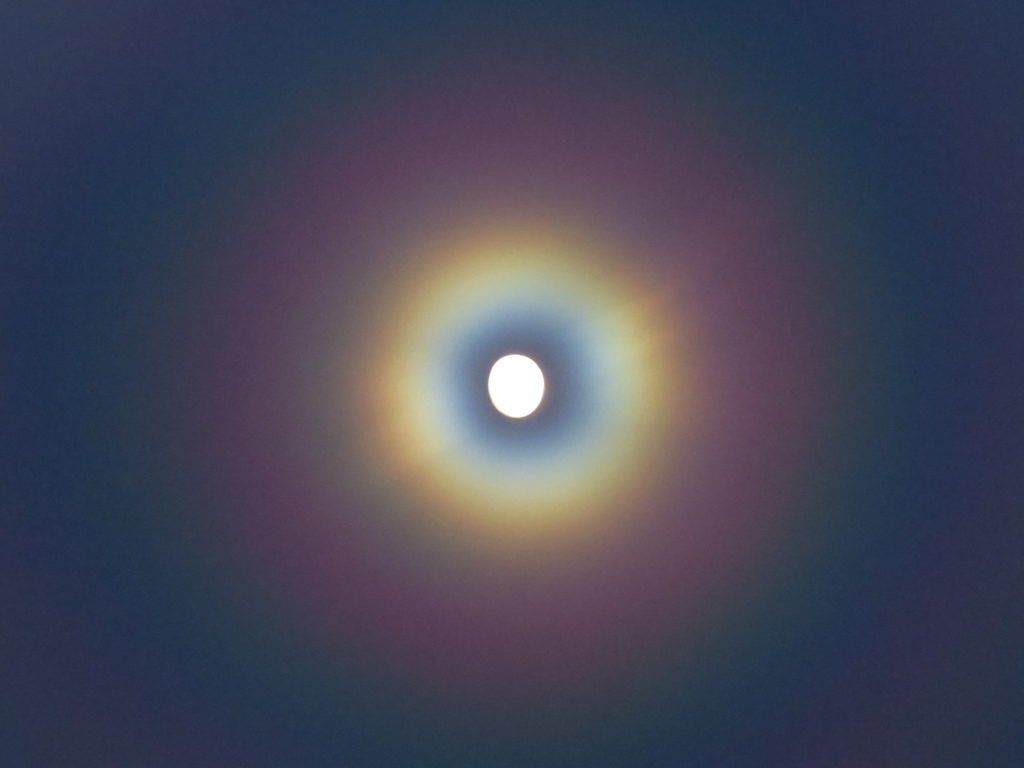
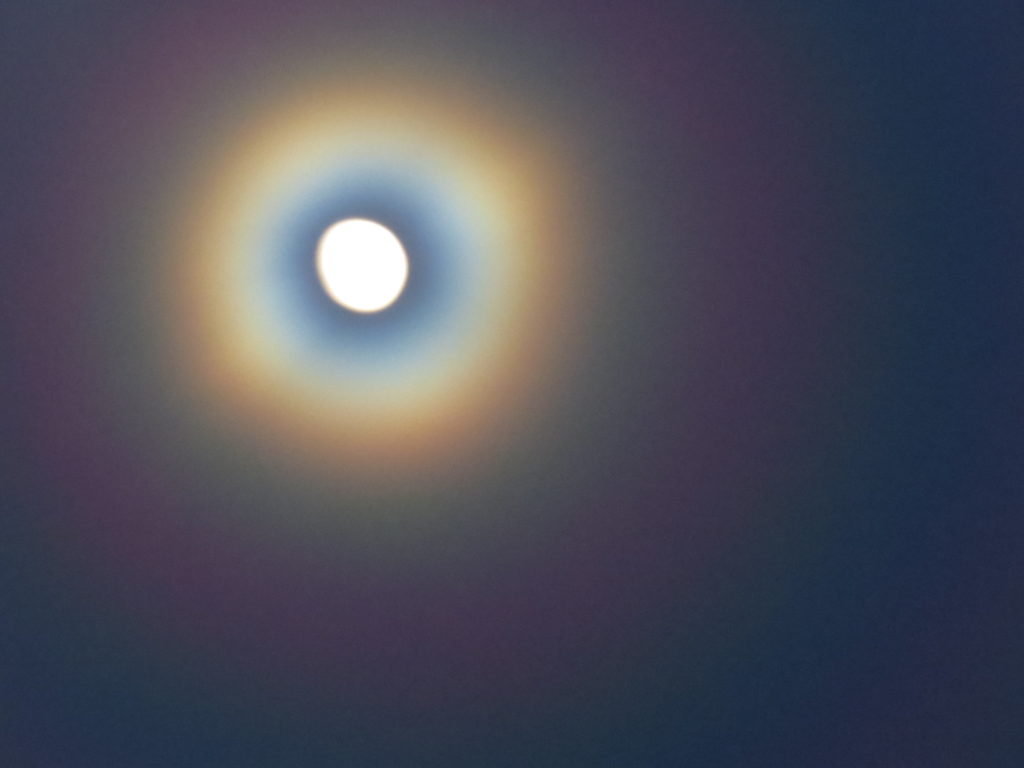
What kind of lens do we look at the world and our lives through? Is something condensing on our lenses when we look at other people? I lived with rose-colored glasses for a good part of my life—it was a coping mechanism I unconsciously employed in an attempt to make me feel safe, to make it look like there were no bad things or bad people in the world. In contrast, there are many people wearing dark-colored glasses who see a certain kind of people as bad, who feel like bad things are happening all around them. Neither vision is the truth, but it is our truth that we see through our lenses. Our fogged up lenses distract us from the very real experiences and happenings of life—whether it’s rainbows, unicorns, monuments, or masks. The energy is fragmented, scattered to peripheral issues that pull us away from the painful reality right in front of us. It is a coping mechanism. We all want to feel safe. Deflect and deny. In truth, the painful reality we are most afraid of is not what is in front of us but what is inside of us.
We all have lenses through which we observe the world. Many are helpful and meaningful to our life’s work, to helping others, and to our relationships. But oftentimes we have a foggy lens—what we see isn’t reality. We need to clear that lens with a clean cotton shirttail. Focus the light on our hearts. Ask yourself, “What do I see in me?” Then the rainbows (as beautiful as they are) and the fear can fall away, and we can see the moon as it is. We can see individual people as they are (just like me in many ways.) We can see harmful situations and a way to make them better. We can want for others what we want for ourselves. It can make all the difference in the world.
